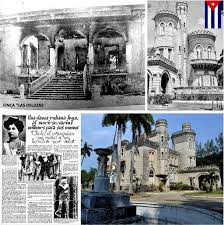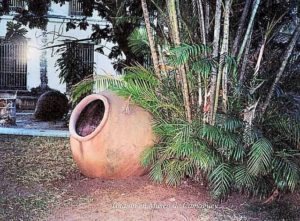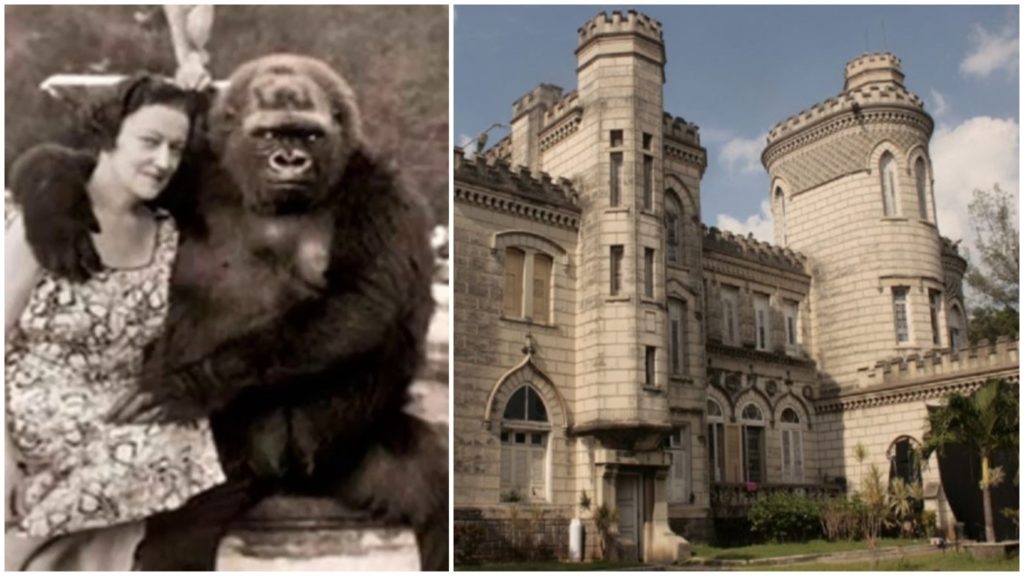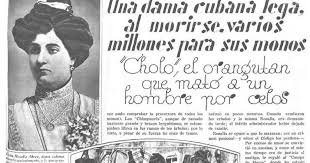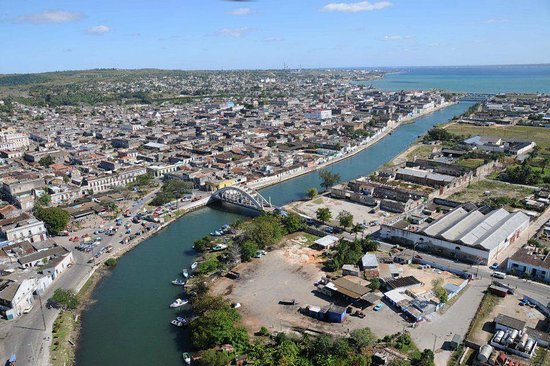LA INOLVIDABLE ROSALIA ABREU Y SU EXTRAORDINARIA “FINCA DE LOS MONOS”. PHOTOS
Corría el mes de Noviembre de 1930 en la Capital Cubana cuando el dia 3, los periódicos destacaron la noticia de la muerte de Rosalía Abreu Arencibia, una de las figuras más controvertidas de la burguesía habanera y la más respetada mundialmente por sus estudios de los primates en cautiverio. Apoyó muchas causas sociales, sostuvo escuelas, hospitales y asilos para familias pobres y contribuyó con fuertes sumas de dinero a la causa independentista cubana. Pero es posible que estos significativos datos no sean los más conocidos, sin embargo su “Finca de los Monos” es recordada por todos.
LA EXTRAORDINARIA “FINCA DE LOS MONOS”
La Finca de los monos es un lugar situado en el reparto Palatino del municipio habanero del Cerro, que hoy es una referencia sin importancia en el tránsito por la Calzada de Santa Catalina. Se trata de un sitio prácticamente olvidado pero en su época fue tan importante que según un autorizado científico norteamericano de la época, allí ocurría “el experimento antropológico más grande jamás realizado”.
Aun hoy se dice que en esa misteriosa edificación con forma de castillo, allá en el Cerro, en las noches de luna llena se pueden percibir las sombras de unos monos bailando un vals en honor a su benefactora, Rosalía Abreu.
Antes de llamarse “Finca de los monos”, se llamaba “Las Delicias”. Tenía siete caballerías de tierra y fue adquirida el 26 de marzo de 1873 por don Pedro Nolasco González Abreu, padre de la insigne patriota Marta González Abreu de Estévez y de Rosalía Paula Caridad de la Luz González Abreu y Arencibia. Esta última mujer fue dueña de una enorme riqueza. Sus recursos, su filantropía y su amor a los animales dieron como resultado la asombrosa colección de animales que reunió en los terrenos que habían sido de su padre.
Famosa sobre todo por su colección zoológica, doña Rosalía fue una mujer generosa y compartió su fortuna en obras de caridad que sostenían varios orfanatos en La Habana y Santa Clara, instituciones educativas y donaciones hechas a la causa independentista durante los últimos años de la etapa colonial.
Se puede decir que la Finca de los Monos fue el primer zoológico en Cuba y que reunía aves, mamíferos y reptiles, casi todos traídos de Asia y África y atendidos personalmente por Rosalía, auxiliada por criados y jornaleros.
En 1928, había fundado con su capital una Escuela Técnica-Industrial para Mujeres en Rancho Boyeros, la Habana, la que se conoce por su nombre en justo homenaje.
LA IGNORANCIA DESTACA NEGATIVOS COMENTARIOS
Pero a pesar de su filantropía, en La Habana de las primeras décadas del siglo XX, fueron muchos los comentarios que corrían de boca en boca sobre la llamada finca de los monos, perteneciente a Rosalía Abreu.
La prensa sensacionalista también se ensañó con Rosalía publicando caricaturas de ella bailando, volando en un avión o en otras situaciones junto con sus monos. Y por ello a su quinta “Las Delicias” la empezaron a llamar “la finca de los monos”. Yo personalmente no conocí otro nombre que no fuera ese.
Se decía que en su mansión en forma de castillo, existía más de un misterio pues los simios que allí habitaban eran tratados casi como personas. Con el tiempo uno de los chimpancés, llamado Jimmy, se convirtió en la mascota preferida de Rosalía y la acompañaba en sus visitas y paseos con un elegante traje hecho a su medida. Viajaba en el asiento delantero al lado del chofer y se encargaba de abrir y cerrar la puerta de su ama y llevarle las cosas que ella compraba o necesitaba.
La famosa bailarina Isadora Duncan, en sus paseos por La Habana, dejó escritas sus impresiones, sobre todo acerca de los queridos e “inofensivos” animalitos de Rosalía Abreu y la valoración de ella como una mujer hermosa, culta e inteligente.
Rosalía Abreu también era intrépida pues fue de las primeras mujeres que se elevaron en un avión en Cuba, junto a la escritora Laura Zayas Bazán y la propietaria del hotel Telégrafo, Pilar Samoano del Toro. Y el piloto era nada más y nada menos que el pionero de la aviación cubana Domingo Rosillo.
Pero no todos pensaban igual que la Duncan, porque no tenían su clase. La mayor parte de los invitados a sus fiestas, miembros de la llamada “alta sociedad” (porque tenían dinero, pero no educación ni cultura) disfrutaban de la música, las comidas y licores y halagaban a Rosalía, pero por detrás, se burlaban de ella y de sus monos.
PROFUNDOS ESTUDIOS CIENTIFICOS
Pero lo cierto es que aquellos animales, a la par que mascotas, fueron convirtiéndose, en el lapso de tres décadas, y gracias al empeño de Rosalía, en objeto de profundos estudios científicos.
En la Finca de los Monos existían también colecciones de cacatúas, guacamayos, papagayos, canarios, pavos reales, gallos japoneses, ciervos, osos, conejos, caballos, perros, gatos y un pequeño elefante llamado Jumbito. El nombre es en alusión a un elefante africano que se hizo mundialmente conocido gracias a la prensa y de nombre Jumbo. Walt Disney logró que Jumbo volase en su película animada de 1941 llamándolo Dumbo, el que agitaba fuertemente sus grandes orejas para poder alzar el vuelo.
Los periódicos capitalinos a partir del mes de noviembre de 1930 repetian una y otra vez titulares como uno que decía: “Una dama cubana lega, al morirse, varios millones para sus monos”.
Sin duda alguna, Rosalía Abreu aprendió que los monos, los perros y muchos animales, son muchísimo mejores que el hombre.
THE UNFORGETTABLE ROSALIA ABREU AND HER EXTRAORDINARY “FINCA DE LOS MONOS” (THE MONKEYS FARM). PHOTOS
It was the month of November 1930 in the Cuban Capital when on the 3rd, the newspapers highlighted the news of the death of Rosalía Abreu Arencibia, one of the most controversial figures of the Havana bourgeoisie and the most respected worldwide for her studies of primates. in captivity. She supported many social causes, supported schools, hospitals, and asylums for poor families, and contributed large sums of money to the Cuban independence cause. But it is possible that these significant data are not the best known of her, however her “Finca de los Monos” is remembered by all.
THE EXTRAORDINARY “FINCA DE LOS MONOS”
The Finca de los Monos is located in the Palatino neighborhood of the Havana municipality of Cerro, which today is an unimportant reference in transit through the Calzada de Santa Catalina. It is a practically forgotten site but in its time it was so important that according to an authoritative North American scientist of the time, “the largest anthropological experiment ever carried out” took place there.
Even today it is said that in that mysterious castle-shaped building, there on the Hill, on full moon nights you can see the shadows of some monkeys dancing a waltz in honor of their benefactor, Rosalía Abreu.
Before being called “Finca de los monos”, it was called “Las Delicias”. It had seven caballerias of land and was acquired on March 26, 1873, by Don Pedro Nolasco González Abreu, father of the distinguished patriot Marta González Abreu de Estévez and Rosalía Paula Caridad de la Luz González Abreu y Arencibia. This last woman was the owner of enormous wealth. Her resources, her philanthropy, and her love of animals resulted in the amazing menagerie she amassed on the land that had been her father’s.
Famous above all for her zoological collection, Doña Rosalía was a generous woman and shared her fortune in charitable works that supported various orphanages in Havana and Santa Clara, educational institutions, and donations made to the independence cause during the last years of the colonial period.
It can be said that the Finca de los Monos was the first zoo in Cuba and that it brought together birds, mammals, and reptiles, almost all brought from Asia and Africa and personally cared for by Rosalía, assisted by servants and day laborers.
In 1928, she founded with her capital a Technical-Industrial School for Women in Rancho Boyeros, Havana, which is known by her name in her just tribute.
IGNORANCE HIGHLIGHTS NEGATIVE COMMENTS
But despite her philanthropy, in Havana in the first decades of the 20th century, there were many comments that spread by word of mouth about the so-called monkey farm, belonging to Rosalía Abreu.
The tabloid press was also merciless with Rosalía by publishing caricatures of her dancing, flying in a plane, or in other situations along with her monkeys. And for this reason, her farm “Las Delicias” began to be called “the farm of the monkeys”. I personally did not know another name that was not that.
It was said that in her mansion in the form of a castle, there was more than one mystery because the apes that lived there were treated almost like people. Over time, one of the chimpanzees, named Jimmy, became Rosalía’s favorite pet and accompanied her on her visits and walks with an elegant suit made to measure for her. He rode in the front seat next to the driver and was in charge of opening and closing the door for her mistress and bringing her the things she bought or needed.
The famous dancer Isadora Duncan, during her walks around Havana, left her impressions written about her, especially about Rosalía Abreu’s beloved and “harmless” little animals and her appreciation as beautiful, cultured, and intelligent.
Rosalía Abreu was also intrepid because she was one of the first women to get on a plane in Cuba, along with the writer Laura Zayas Bazán and the owner of the Telégrafo hotel, Pilar Samoano del Toro. And the pilot was nothing more and nothing less than the pioneer of Cuban aviation Domingo Rosillo.
But not everyone thought the same way as Duncan because they didn’t have her class. Most of the guests at her parties, members of the so-called “high society” (because they had money, but no education or culture) enjoyed the music, food, and liquor and flattered Rosalía, but from behind, they mocked Rosalía. her and her monkeys.
DEEP SCIENTIFIC STUDIES
But the truth is that those animals, as well as pets, were becoming, in the span of three decades, and thanks to Rosalía’s efforts, the object of in-depth scientific studies.
In the Finca de los Monos there were also collections of cockatoos, macaws, parrots, canaries, peacocks, Japanese roosters, deer, bears, rabbits, horses, dogs, cats, and a small elephant called Jumbito. The name is alluding to an African elephant that became known worldwide thanks to the press and was named Jumbo. Walt Disney managed to make Jumbo fly in his 1941 animated film by calling him Dumbo, the one who flapped his big ears hard to get off the ground.
The capital’s newspapers from the month of November 1930 repeated over and over again headlines such as one that said: “A Cuban lady bequeaths, upon her death, several million for her monkeys.”
Without a doubt, Rosalía Abreu learned that monkeys, dogs, and many animals are much better than man.
Agencies/ MemoriasCubanas/ Carlos RodríguezB/ Derubín Jacome/ Extractos/ Excerpts/ Internet Photos/ Arnoldo Varona/ www.TheCubanHistory.com
THE CUBAN HISTORY, HOLLYWOOD.



